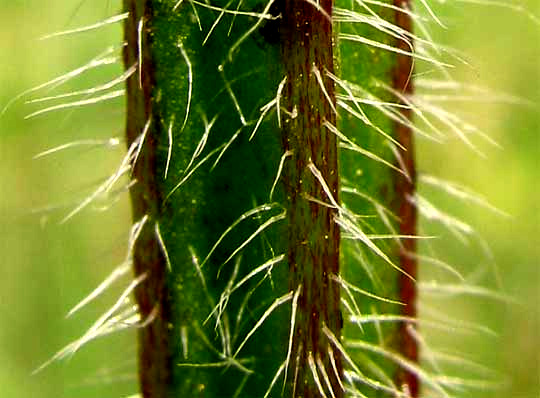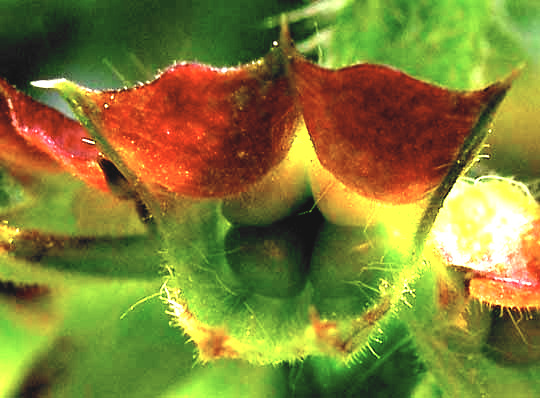Excerpts from Jim Conrad's
Naturalist Newsletter
from the April 6, 2009 Newsletter, issued from the forest near Natchez, Mississippi; elevation ~400ft (120m), ~N31.47°, ~W91.29°:
FEATURES OF THE MINT FAMILY
Not all members of the Mint Family, the Labiatae, smell minty. Since the Mint Family is so large and important, you may enjoy knowing what features usually but not always distinguish its members.
First, Mint-Family flowers usually are "dog faced" -- they have bilateral symmetry instead of the radial symmetry displayed by most flowers. In bilaterally symmetrical flowers there's only one way you can cut across the flower so that one cut half perfectly mirrors the other half. In radially symmetrical blossoms there are several ways.
Second, mint plants produce two leaves per node instead of the more common single leaf; they're "opposite."
Third, the stems of mint plants are square in cross section, as shown by the Lyreleaf Sage's stem below:

Finally, if you peep into the flower's cuplike calyx after the corolla has fallen off after pollination you'll see that instead of there being a single oval ovary as usually is the case, the ovary is divided into four seedlike "nutlets," as shown so prettily below:
 .
.
The Mint Family and the Verbena or Vervain Family, the Verbenaceae, are closely related and, especially in the past, were not always easily differentiated. Recent gene sequencing has caused a number of Verbena Family genera to be shifted into the Mint Family, so now family differences are clearer and the above features are more likely to accurately lead to "mints."